In the world of sewing and tailoring, precision is paramount, and every stitch counts. Among the often-overlooked heroes of this craft are tacking stitches.
These seemingly humble yet crucial temporary stitches play a vital role in ensuring the accuracy, alignment, and overall quality of sewing projects.
From the basic tailor’s tacking to the specialized arrowhead tacking and bar tacking, each technique brings its unique strengths to the sewing table.
Whether you’re an experienced seamstress or a novice, understanding the various tacking methods can significantly enhance your sewing skills.
In this exploration, we’ll delve into the diverse types and techniques of tacking stitches, shedding light on their significance and how they contribute to the art of sewing and garment construction.
1. Tailor’s Tacking
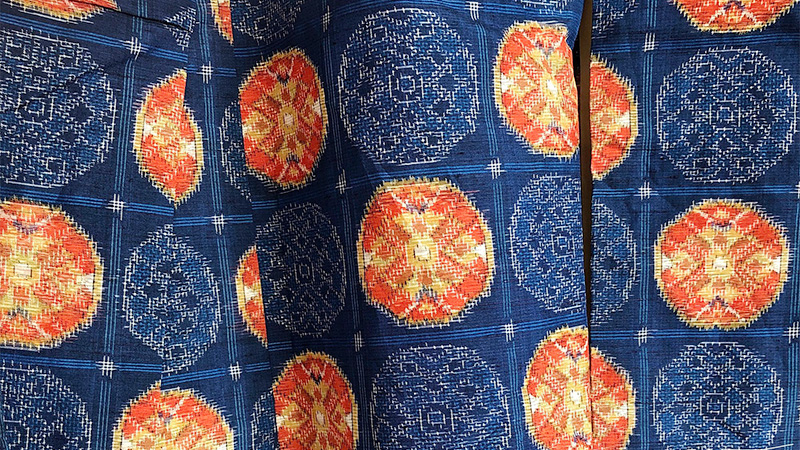
Tailor’s tacking is a fundamental sewing technique that involves creating temporary stitches to hold fabric layers together. These stitches are easily removable and serve as guides for precise stitching.
Typically, contrasting thread is used to make tailor’s tacking stitches, making them highly visible for easy removal once the permanent stitching is completed.
Tailors rely on this technique to secure fabric pieces in place during the fitting and construction processes, ensuring accurate alignment and a well-finished garment.
Whether it’s shaping darts, positioning pockets, or ensuring proper seams, tailor’s tacking is an indispensable tool in the world of sewing and tailoring, facilitating precision and craftsmanship.
2. Long Tacking
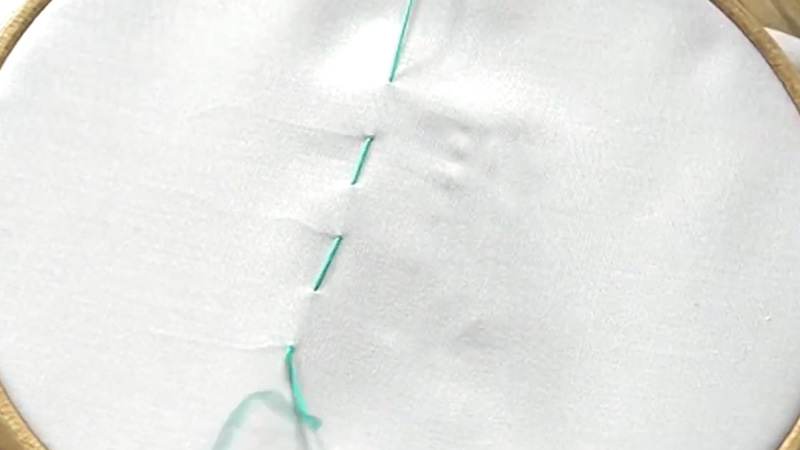
Long tacking is a variation of the basic tacking stitch used in sewing and tailoring. Unlike its shorter counterpart, long tacking involves creating temporary stitches with larger gaps between them.
This technique provides a different level of fabric security, depending on the spacing of the stitches. Long tacking is particularly useful for holding fabric layers together when a more temporary and easily adjustable hold is needed.
It allows for quicker removal and adjustments during the sewing process, making it a versatile method in garment construction. Whether used in positioning pattern pieces or preparing for intricate sewing tasks, long tacking offers flexibility and convenience to sewers and tailors.
3. Short Tacking
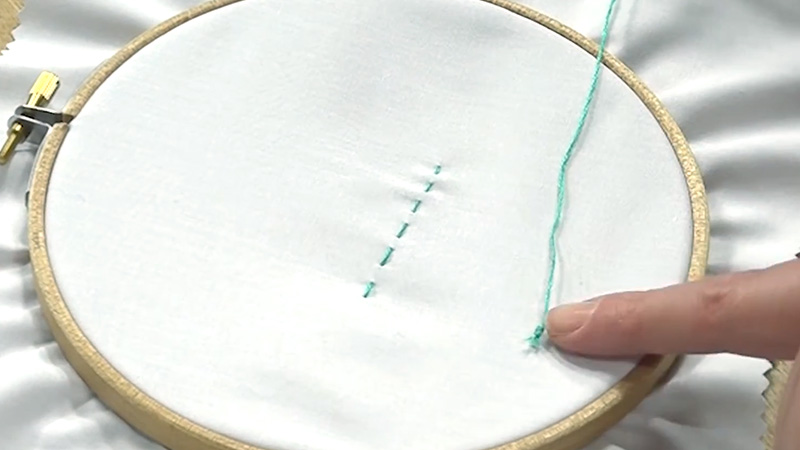
Short tacking is a sewing technique characterized by creating temporary stitches with smaller intervals between them. These closely spaced stitches offer a strong and secure hold, making them ideal for situations where fabric layers need to be firmly attached before permanent stitching.
Short tacking provides precision in positioning, ensuring that fabric pieces stay in place during sewing and prevents shifting or misalignment. It is commonly used in tasks such as basting, quilting, or securing delicate fabrics like silk or lace.
Short tacking stitches are easy to remove once the final sewing is complete, leaving behind a neatly finished product. This technique is a valuable tool in achieving accuracy and professional results in sewing projects.
4. Diagonal Tacking Stitch
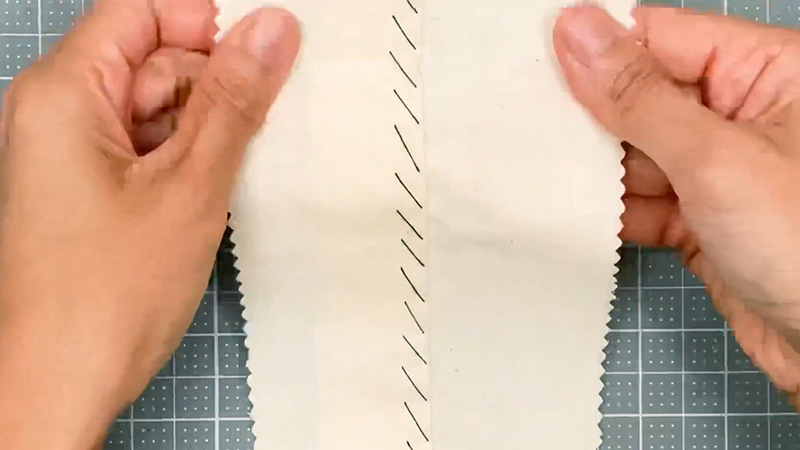
Diagonal tacking stitch is a sewing technique where temporary stitches are made diagonally across fabric layers. These stitches provide both secure attachment and ease of removal, making them valuable for various sewing applications.
Diagonal tacking is particularly useful in situations where traditional straight tacking may not suffice. It offers improved stability and alignment, ensuring that fabric pieces stay in place during sewing.
This technique is often employed when working with intricate patterns, and delicate fabrics, or when creating decorative elements on garments.
Once the final stitching is complete, diagonal tacking stitches can be effortlessly removed, leaving behind a clean and polished finish in the sewing project.
5. Machine Tacking
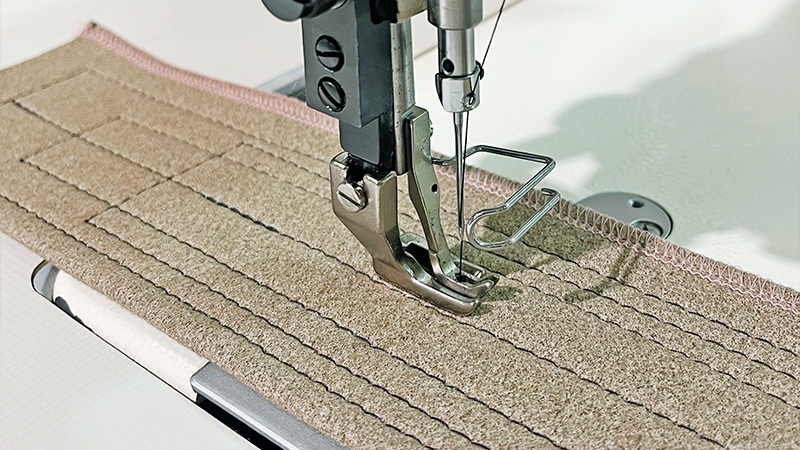
Machine tacking is a sewing method that utilizes a sewing machine to create temporary stitches for holding fabric layers together. Unlike traditional hand tacking, machine tacking is a faster and more efficient process, especially when dealing with larger projects.
Sewing machines are equipped with different types of stitches that can be adjusted to create temporary holds of varying lengths and tensions. Machine tacking is commonly used in industrial settings, such as garment factories, but it’s also a convenient option for home sewers.
This technique ensures precise and consistent tacking, enhancing the speed and accuracy of sewing tasks before final stitching or permanent seams are added.
6. Tie Tacking Stitch
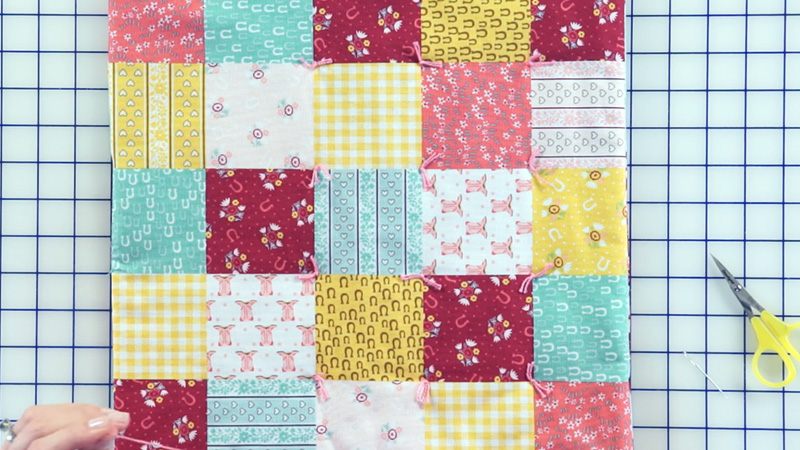
The tie tacking stitch is a specialized sewing technique employed in the creation of neckties. This unique stitch serves a crucial purpose in securing the folds and layers of the tie before the final stitching is done.
Typically, a slip stitch or ladder stitch is used, allowing the tie to maintain its shape and structure while also ensuring a neat appearance. The tie tacking stitch is positioned strategically along the length of the tie, securing the interlining and fabric layers.
This meticulous step ensures that the tie retains its crisp, refined look and that it hangs properly when worn, contributing to a polished and professional appearance.
7. Hand Tacking
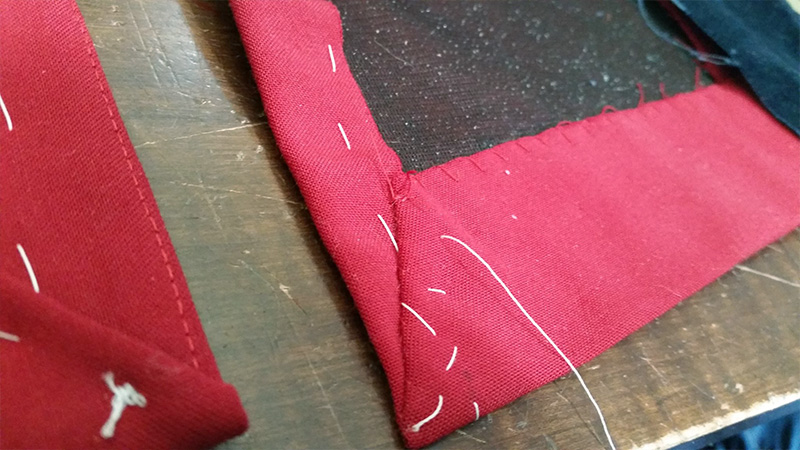
Hand tacking, a traditional sewing technique, involves the use of hand-sewn temporary stitches to hold fabric layers together before permanent stitching.
It’s a versatile method used in garment construction, quilting, and other sewing projects. Hand tacking provides precise control over fabric alignment, easing the process of fitting adjustments and ensuring accurate seam placements.
Typically executed with a contrasting thread, these stitches are easy to spot and remove once their purpose is served, leaving behind a clean and polished finish.
Hand tacking remains an essential skill in sewing, allowing for meticulous craftsmanship and attention to detail in creating well-fitted and professionally finished garments and textiles.
8. Arrow Head Tacking
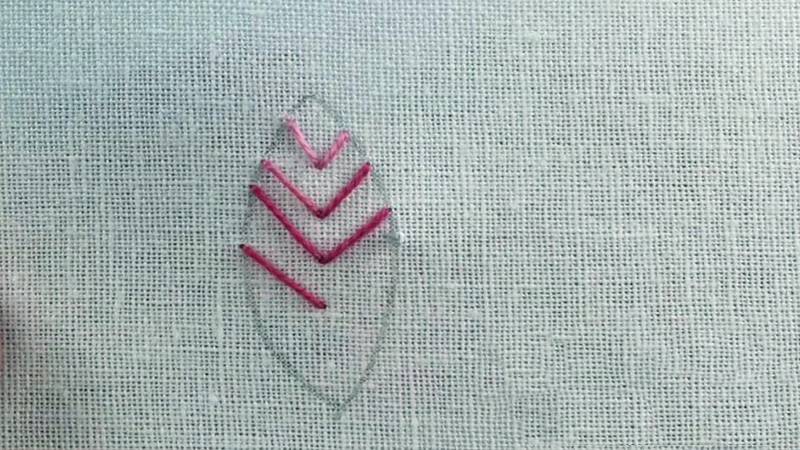
The arrowhead tacking stitch is a specialized sewing technique that creates temporary stitches resembling the shape of arrowheads. This method offers both secure fabric hold and ease of removal, making it invaluable for various sewing applications.
Arrowhead tacking is particularly useful in situations where precise positioning and stability are required before permanent sewing. These distinct stitches are typically made with contrasting thread for visibility.
Once the final stitching is complete, the arrowhead tacking stitches can be easily removed, leaving behind a clean, professional finish in the sewing project. This technique is prized for its ability to combine accuracy and convenience in sewing tasks.
9. Bar Tacking Stitch
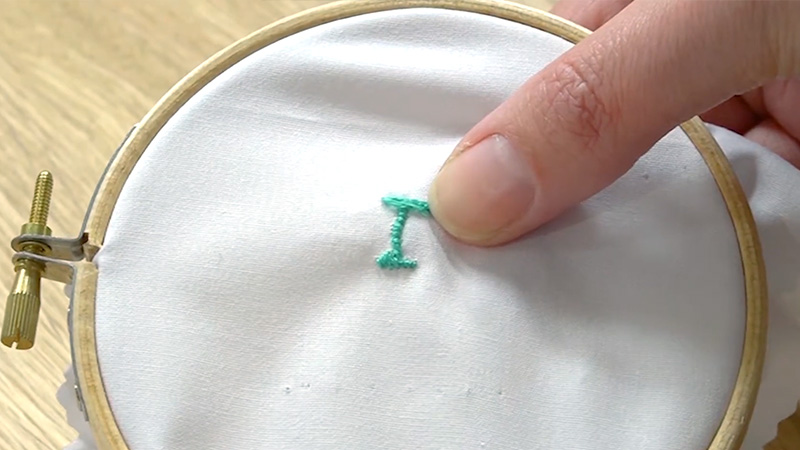
The bar tacking stitch is a robust and dense sewing technique employed to reinforce specific areas of fabric, such as belt loops, pocket openings, or high-stress points in garments.
Instead of lengthy stitches, a series of closely spaced, short stitches are sewn in a rectangular or bar-like pattern. This creates a sturdy and durable bond, preventing fabric from fraying or tearing under strain.
Bar tacking is essential for maintaining the integrity of items subject to frequent wear and stress. It’s commonly used in denim jeans, workwear, and outdoor gear, ensuring that these garments withstand the rigors of daily use, making it a cornerstone of robust sewing and tailoring.
10. Uneven Tacking
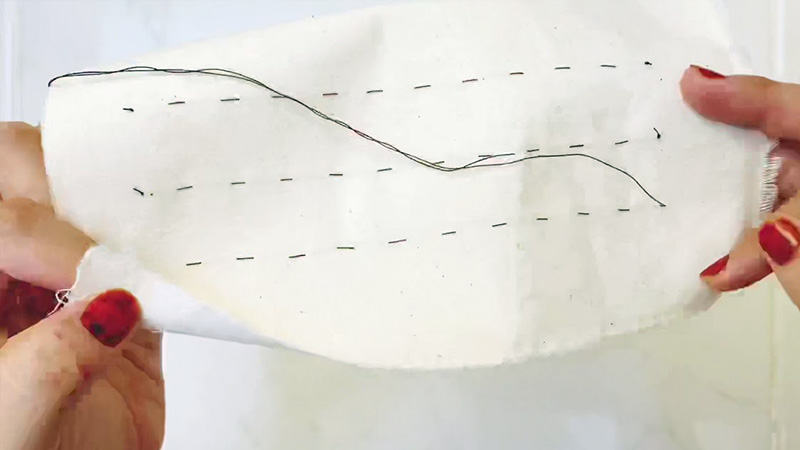
Uneven tacking refers to a sewing issue where temporary stitches, typically used for fabric positioning, are unevenly spaced or inconsistently placed.
This can occur due to a lack of precision or attention during the tacking process. Uneven tacking may lead to fabric misalignment, which can result in a skewed final product or a poorly fitting garment.
It’s essential to maintain uniform and accurate tacking to ensure the proper alignment of fabric layers before permanent stitching. Sewers and tailors often take care to even space their tacking stitches and maintain consistent tension to achieve the desired results and avoid issues arising from uneven tacking.
11. Even Tacking
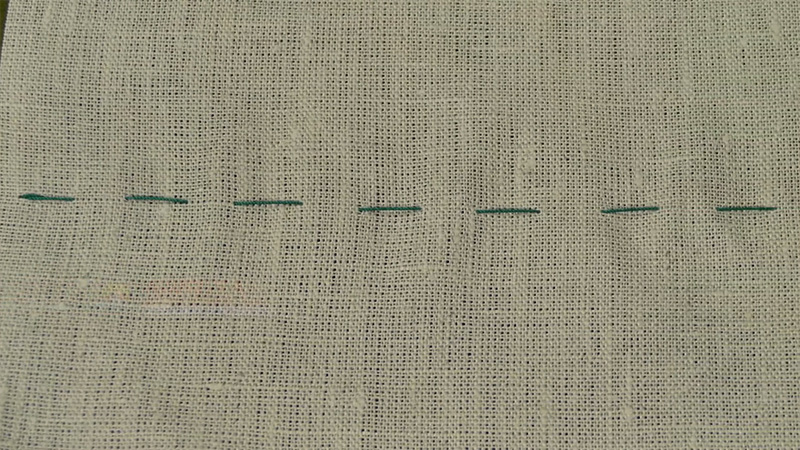
Even tacking is a precise sewing technique in which temporary stitches are evenly spaced and consistently placed to secure fabric layers together temporarily.
Achieving even tacking involves meticulous attention to detail, ensuring that the stitches are equidistant from one another and maintain uniform tension.
This technique is crucial in sewing and tailoring for accurate fabric positioning, alignment, and fitting during garment construction. Even tacking provides a solid foundation for subsequent permanent stitching, helping to prevent fabric misalignment and sewing errors.
Sewers and tailors strive for even tacking to ensure their projects are well-crafted, aesthetically pleasing, and achieve the desired fit and finish.
Conclusion
Tacking stitches are the unsung heroes of the sewing world, often overlooked but undeniably essential. Whether it’s the precision of tailor’s tacking, the strength of bar tacking, or the versatility of diagonal tacking, each technique serves a unique purpose in the art of sewing and tailoring.
Hand tacking offers a personal touch, while machine tacking adds efficiency to production. Whether you’re a seasoned seamstress or just starting your sewing journey, understanding these various tacking methods can elevate your skills and craftsmanship.
Tacking stitches act as temporary guides, ensuring accuracy and alignment before permanent stitching takes place. So, remember to tack diligently, for it’s the foundation upon which impeccable garments and beautifully sewn creations are built.
Leave a Reply